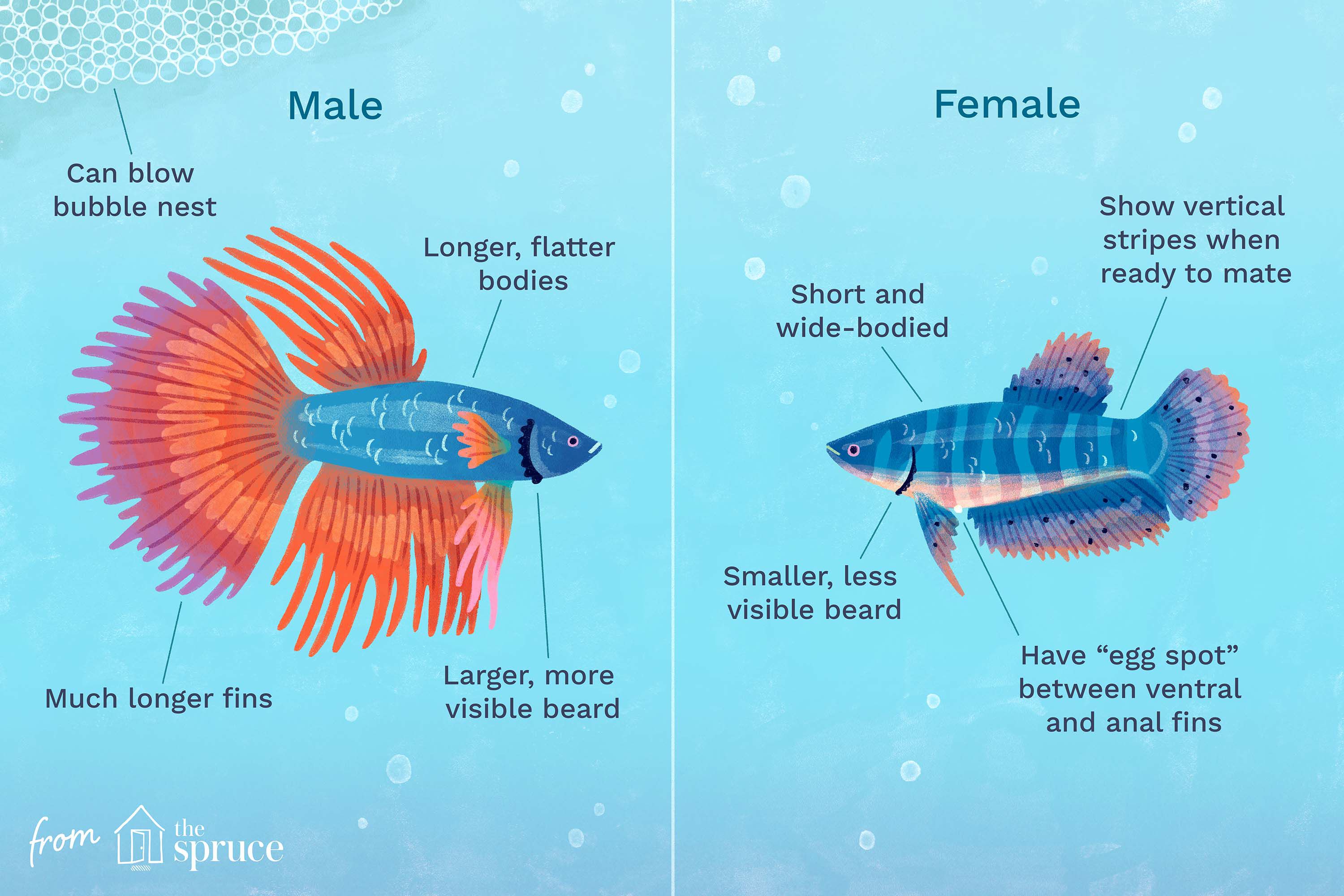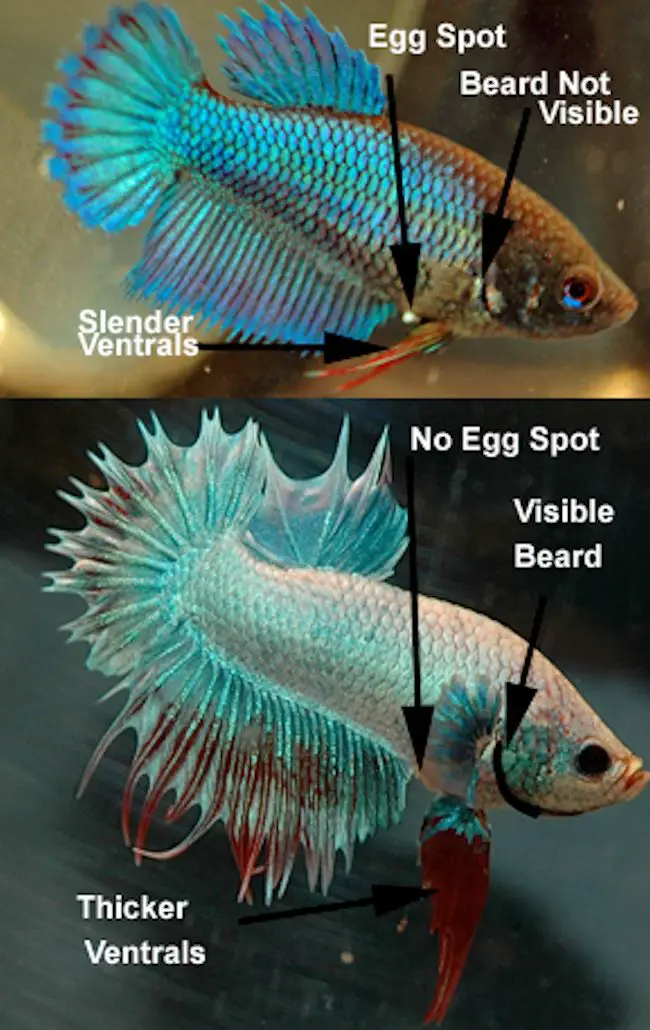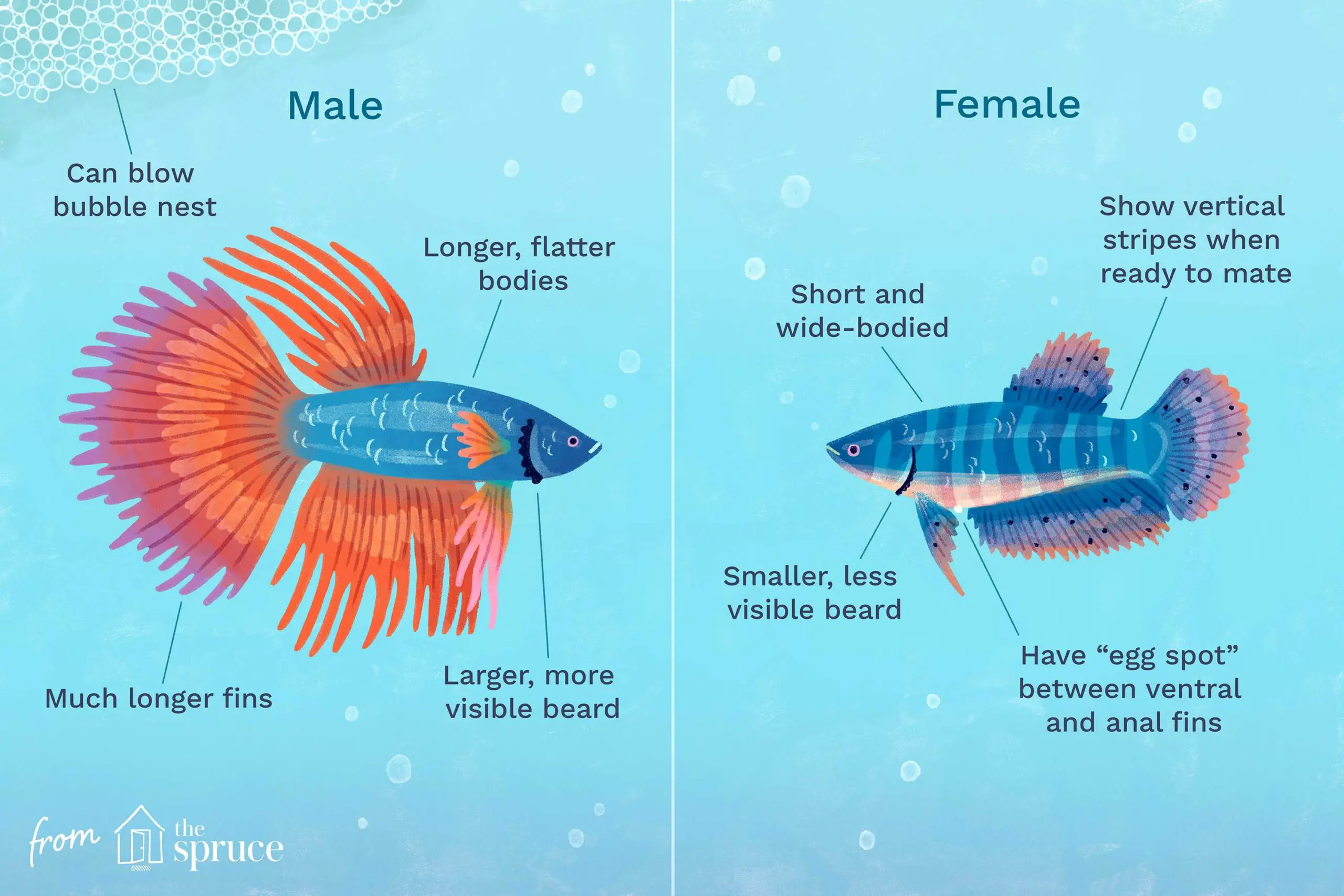Are you curious about how to tell the gender of your Betta fish? It can be difficult to distinguish between male and female Betta fish, especially if you’re new to the world of fishkeeping. However, with a few simple tips and tricks, you can easily determine the gender of your Betta fish.
In this article, we’ll explore some of the key physical characteristics that can help you identify whether your Betta fish is male or female. From examining their fins to observing their behavior, we’ll provide you with all the information you need to confidently determine the gender of your Betta fish. So, whether you’re a seasoned fishkeeper or a curious beginner, read on to discover how to tell Betta fish gender!
- Check the fins. Males have longer, flowing fins, while females have shorter, more rounded fins.
- Look for a prominent egg spot. Females have a small white spot on their underbelly, which is the ovipositor used to lay eggs.
- Observe their behavior. Males are more aggressive and territorial, while females are more passive.

How to Tell Betta Fish Gender?
Betta fish, also known as Siamese fighting fish, are one of the most popular aquarium fish known for their vibrant colors and long, flowing fins. Betta fish are easy to care for and make great pets, but it is essential to know their gender for breeding purposes and maintaining a healthy environment. In this article, we will guide you on how to tell betta fish gender.
Physical Differences between Male and Female Betta Fish
Male and female betta fish have many physical differences that can help you differentiate between the two. The easiest way to identify the gender of a betta fish is to look for their physical characteristics.
Female betta fish have a rounder body shape, while males have a longer, slimmer body. The males have a long and colorful tail fin, which they flare when they feel threatened or want to attract a female. On the other hand, female bettas have shorter fins and are less colorful than males. They also have an egg spot, which is a small white dot on the underside of their belly.
When betta fish are young, it can be challenging to differentiate between the genders, but as they mature, the physical differences become more prominent.
Behavioral Differences between Male and Female Betta Fish
Apart from physical differences, betta fish also have behavioral differences that can help you determine their gender. Male betta fish are territorial and aggressive towards other males, whereas females are more peaceful and can live in groups.
Males often display aggressive behavior by flaring their fins and gills, which is a sign of dominance. They also build bubble nests, which are small bubbles on the surface of the water used to protect their eggs. Females, on the other hand, do not build bubble nests and are less aggressive.
Other Methods to Identify Betta Fish Gender
Apart from physical and behavioral differences, there are other methods to identify betta fish gender.
One method is to observe their ventral fins. Males have longer ventral fins, while females have shorter ones. Another method is to examine their anal fins. Males have a pointed anal fin, while females have a more rounded one.
You can also consult an expert or a veterinarian who can help you determine the gender of your betta fish accurately.
Benefits of Knowing Betta Fish Gender
Knowing the gender of betta fish is essential for breeding purposes. Breeding betta fish can be a fascinating and rewarding experience, but it requires knowing the gender of your fish.
Breeding betta fish is also a way to preserve their genetics and prevent inbreeding. Inbreeding can lead to genetic defects and health problems in betta fish.
Knowing the gender of betta fish can also help you maintain a healthy environment. Males are territorial and aggressive towards other males, so keeping them in separate tanks can prevent fights and injuries.
Male vs. Female Betta Fish
Male and female betta fish have their unique characteristics and behaviors that make them different from each other.
Male betta fish are more colorful and have longer fins, making them a popular choice for aquarium enthusiasts. They are also more aggressive and territorial than females.
Female betta fish, on the other hand, are less colorful and have shorter fins. They are also less aggressive and can live in groups.
In conclusion, identifying the gender of betta fish is essential for breeding purposes and maintaining a healthy environment. By observing their physical characteristics and behavior, you can differentiate between male and female betta fish.
Freequently Asked Questions
Here are the top 5 frequently asked questions about how to tell Betta fish gender:
Q: What are the physical differences between male and female Betta fish?
Male Betta fish have longer and more colorful fins compared to female Betta fish. They also have a more slender body shape and a pointed anal fin. Female Betta fish have shorter fins and a rounder body shape. Their anal fin is more rounded and has a white spot at the base.
However, these physical differences may not be apparent until the Betta fish reach maturity, which is around 4-6 months old.
Q: Can you tell the gender of a Betta fish by their behavior?
Yes, male Betta fish are more aggressive and territorial compared to female Betta fish. They also flare their fins and gills more often, especially when they see their reflection or another Betta fish. Female Betta fish are generally less aggressive and have a more peaceful demeanor.
However, behavior alone may not be a reliable indicator of Betta fish gender, especially if they are young or unexperienced.
Q: Do all Betta fish have a visible egg spot?
No, not all female Betta fish have a visible egg spot, especially if they are young or have not yet matured. The egg spot is a small white dot located on the underside of the female Betta fish, near the anal fin. It is used to identify the female Betta fish and is where the eggs are released during spawning.
However, the absence of an egg spot does not necessarily mean that the Betta fish is male, as some females may not display this characteristic.
Q: How accurate are Betta fish gender identification methods?
Gender identification methods for Betta fish, such as physical characteristics and behavior, are generally accurate but may not be foolproof. There may be instances where a male Betta fish displays more feminine characteristics or a female Betta fish displays more masculine characteristics.
Additionally, there are rare cases where Betta fish may be hermaphroditic, meaning they have both male and female reproductive organs. In these cases, it may be difficult to determine the gender of the Betta fish without genetic testing.
Q: Why is it important to know the gender of Betta fish?
Knowing the gender of Betta fish is important for a number of reasons. For example, if you plan to breed Betta fish, it is essential to have both a male and female Betta fish. Additionally, certain types of Betta fish, such as male Betta fish with long fins, may require a different diet or living conditions compared to female Betta fish.
Furthermore, if you have multiple Betta fish in the same tank, it is important to know their genders to prevent aggression and territorial disputes.

How to identify MALE and FEMALE betta Fish ” Female betta fish make bubble nests”
In conclusion, identifying the gender of betta fish is crucial for several reasons. It helps pet owners to maintain a healthy and happy aquarium environment. The process of telling betta fish gender is relatively straightforward, but it requires a keen eye for detail and a bit of patience. Remember to examine the fish’s physical characteristics, such as their fins, body shape, and coloration. Additionally, you can observe their behavior patterns to further confirm their gender. With these tips, you can confidently tell the difference between male and female betta fish and enjoy watching them thrive in your aquarium.

